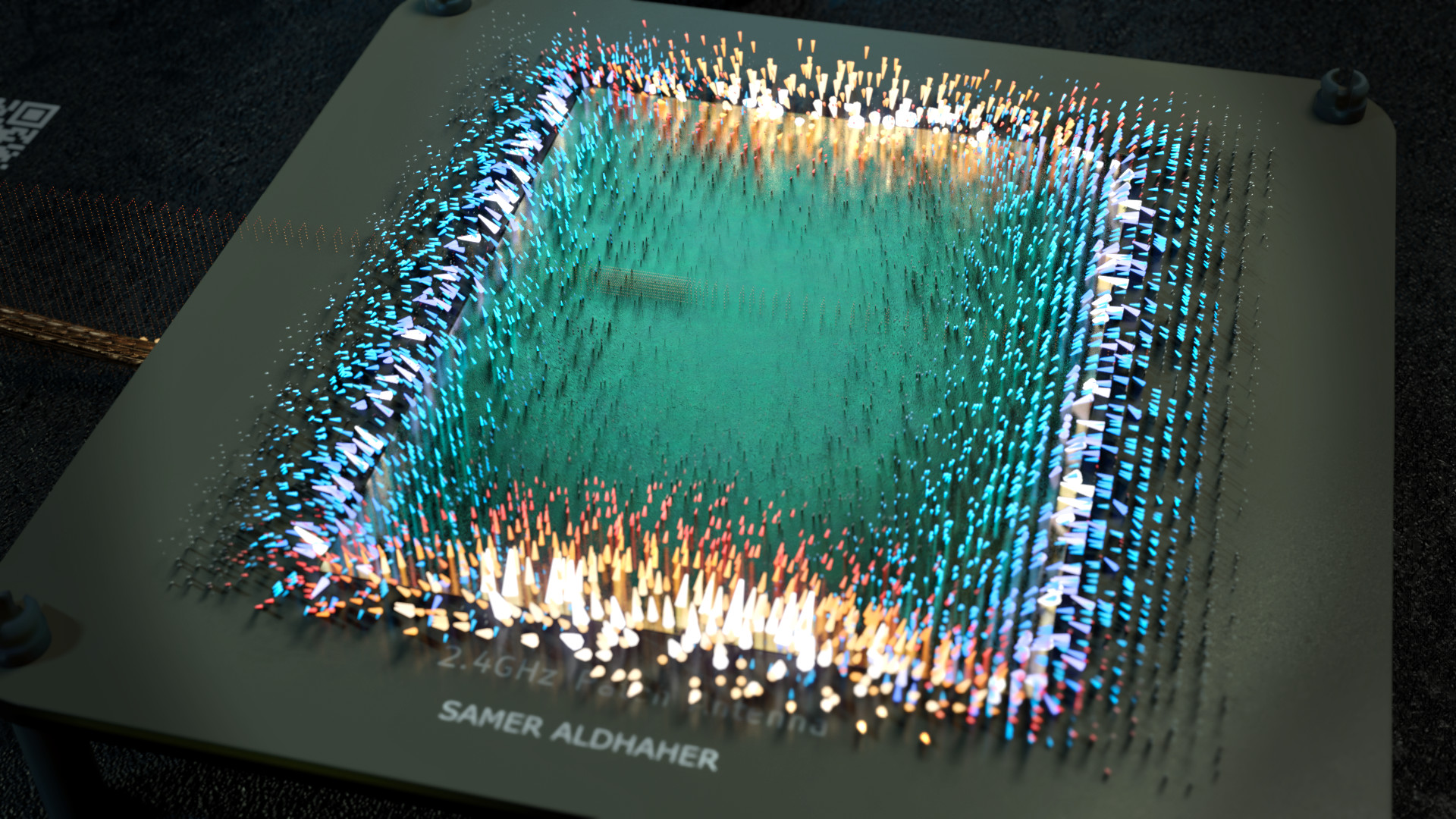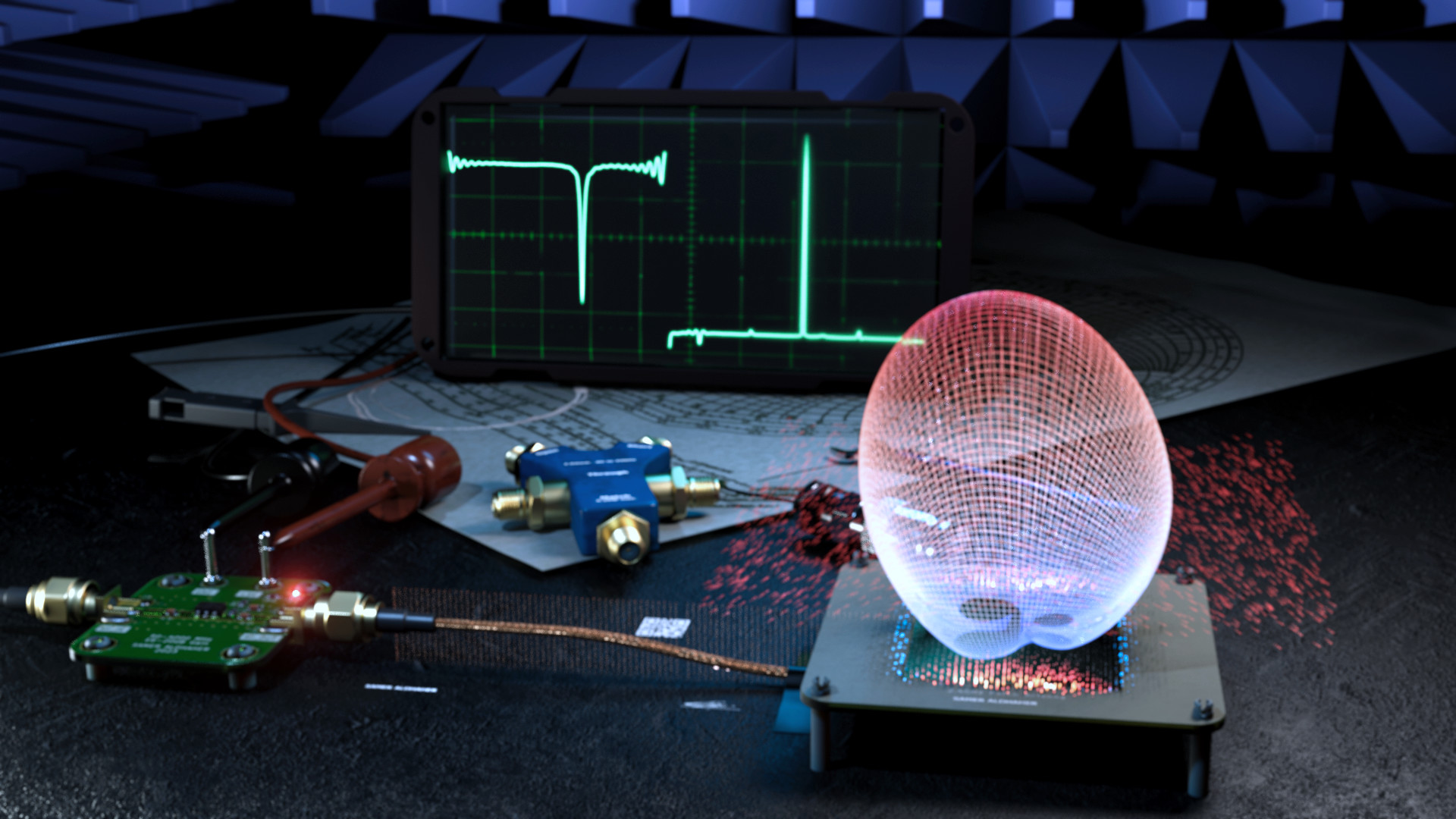openEMS/Blender simulations and renders showcase #48
Replies: 11 comments 20 replies
-
|
Thanks for sharing. This is indeed something I have done in the past too and it is always a lot of fun to see the final result... |
Beta Was this translation helpful? Give feedback.
-
2.4Ghz patch antenna with a coax cable feedMy next simulation scene is for a 2.4Ghz patch antenna with a coax cable feed. I've shown the electric (blue) and magnetic fields (orange) just above the surface of the antenna, and you can see how the fields are orthogonal to each other and intense at different edges of the antenna. Really enjoyed working on this example and these animations helped me understand antennas a bit more. You can watch the video at HD resolution on YouTube 2.4Ghz.Patch.Antenna.Simulation.openEMS.blender3d.mp42.4Ghz.Patch.Antenna.Simulation.Closeup.mp4 |
Beta Was this translation helpful? Give feedback.
-
|
Hi @samerps ! Excellent work. Looking forward to seeing the detailed workflow! |
Beta Was this translation helpful? Give feedback.
-
|
My next set of simulations and renders are for a 2.4GHz meandered inv F PCB antenna, based on the design from Texa's Instruments App note AN043 Meandered.Inv.F.PCB.Antenna.mp4 |
Beta Was this translation helpful? Give feedback.
-
How are you doing that ?! |
Beta Was this translation helpful? Give feedback.
-
|
PCB layout simulation. I was able to simulate the layout of a two layer FR4 PCB that has a meandered inv F antenna designed for 2.4GHz, I was interested to see how the routing and layout will impact S11. The result I got showed that my specific layout caused S11 to dip at 2.55GHz instead of 2.4GHz WiFi.PCB.Layout.Simulation.in.openEMS.Blender.mp4 |
Beta Was this translation helpful? Give feedback.
-
|
Hi Samer, |
Beta Was this translation helpful? Give feedback.
-
60GHz mmWave Simulations!I will be using one Texas Instruments mmWave evaluation boards, specifically TIDEP-01001 which features the AWR6843 60GHz single-chip mmWave sensor. The design consists of a 60GHz transmitting and receiving patch antenna arrays that are series-fed from transmission lines to and from the AWR6843 sensor. 60GHz.mmWave.Simulation.with.openEMS.Blender.-.Part1.mp4 |
Beta Was this translation helpful? Give feedback.
-
|
The apollo lunar rover had a high gain antenna with a foldable parabolic reflector for voice and video transmission to earth. This simulation shows how the reflector dish unfolds and how the received electromagnetic waves become focused at the antenna feed Apollo.Lunar.Rover.-.High.Gain.Antenna.mp4 |
Beta Was this translation helpful? Give feedback.
-
|
Attempting to simulate a 70GHz Rotman Lens with openEMS! After seeing a few inspiring tweets from https://www.youtube.com/watch?v=L-mRn4BJroo This animation shows the launch of the electric field component from one port and how it propogates throughout the lens. It does seem that most of waves are absorbed at each inactive port, though there are some reflected waves which I believe may be due to the mesh of the model. I will do another sim with the phased array elements to look how beamforming is achieved. |
Beta Was this translation helpful? Give feedback.
-
|
@samerps Like a few before have asked, I'm looking for your documented workflow. Please let me know where I can find such. THe more detail the better! :D |
Beta Was this translation helpful? Give feedback.







Uh oh!
There was an error while loading. Please reload this page.
-
Hi all, I would like to start a thread here to showcase my work with openEMS and Blender. I have started using openEMS last month and it has been a fantastic tool to simulate and understand more about electromagnetics. I also have been using Blender over the last two years to create renders and animations of electronics. And so naturally the next thing is to use the results from openEMS and render them in a Blender scene. My goal is to make it simpler and fun for people to understand all things related to electromagnetics and circuits, and hopefully inspire people to study these topics.
I am planning to share my workflow, models and tools in the near future. So far my workflow is as follows:
My plan is to skip paraview, and import vtk files directly into Blender. I have looked at BVtkNodes for Blender but didn't have much success in get the data imported correctly.
My first render/animation is a simple one, showing what happens to an electromagnetic wave when it is launched into a coax cable with an open termination.
You can see the animation in 4k on YouTube
https://www.youtube.com/watch?v=okZ8GFbtjpo
I will also be publishing these renders on my social media accounts
https://twitter.com/samerps
https://www.linkedin.com/in/samerps/
https://www.artstation.com/high_voltage
Beta Was this translation helpful? Give feedback.
All reactions